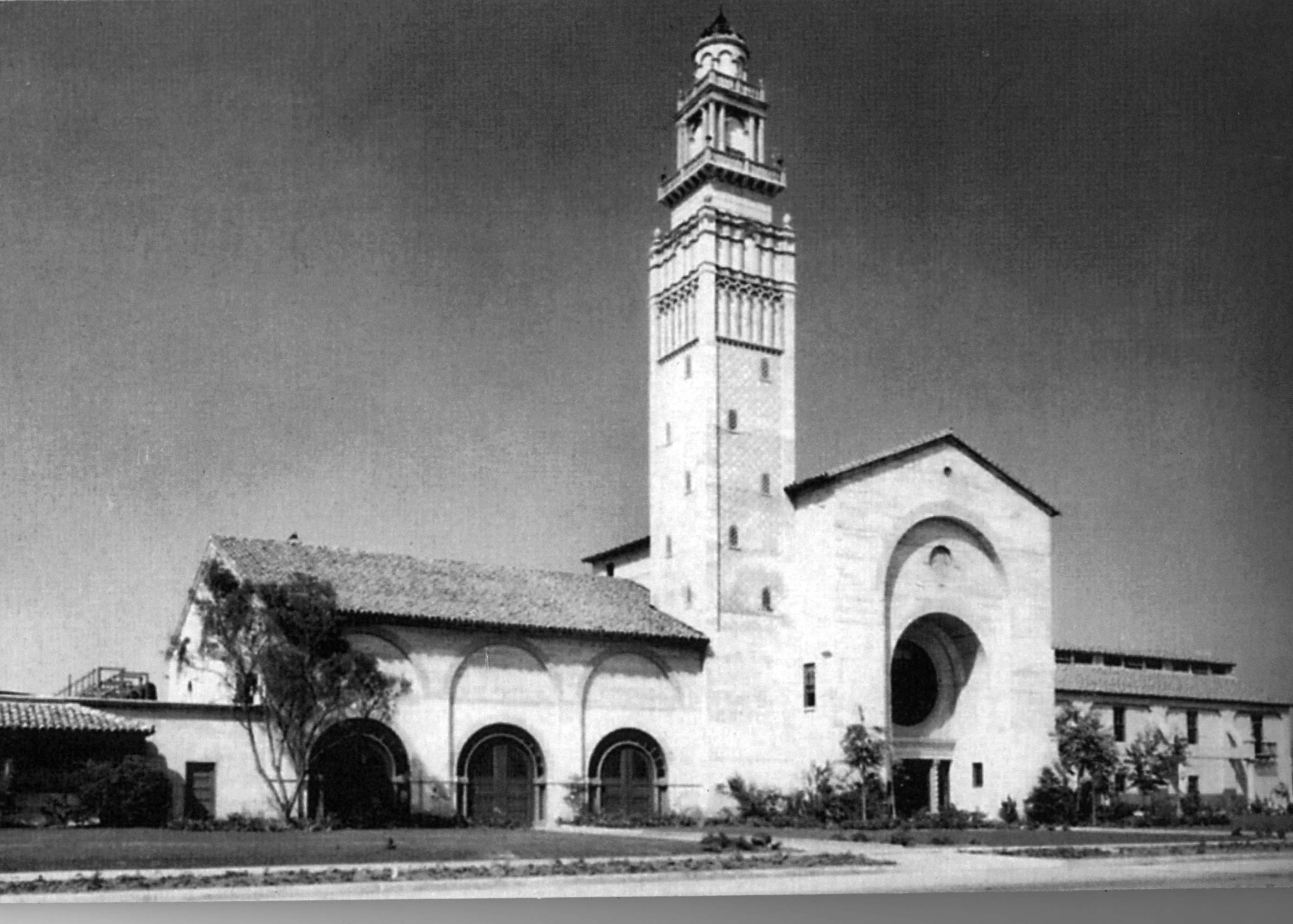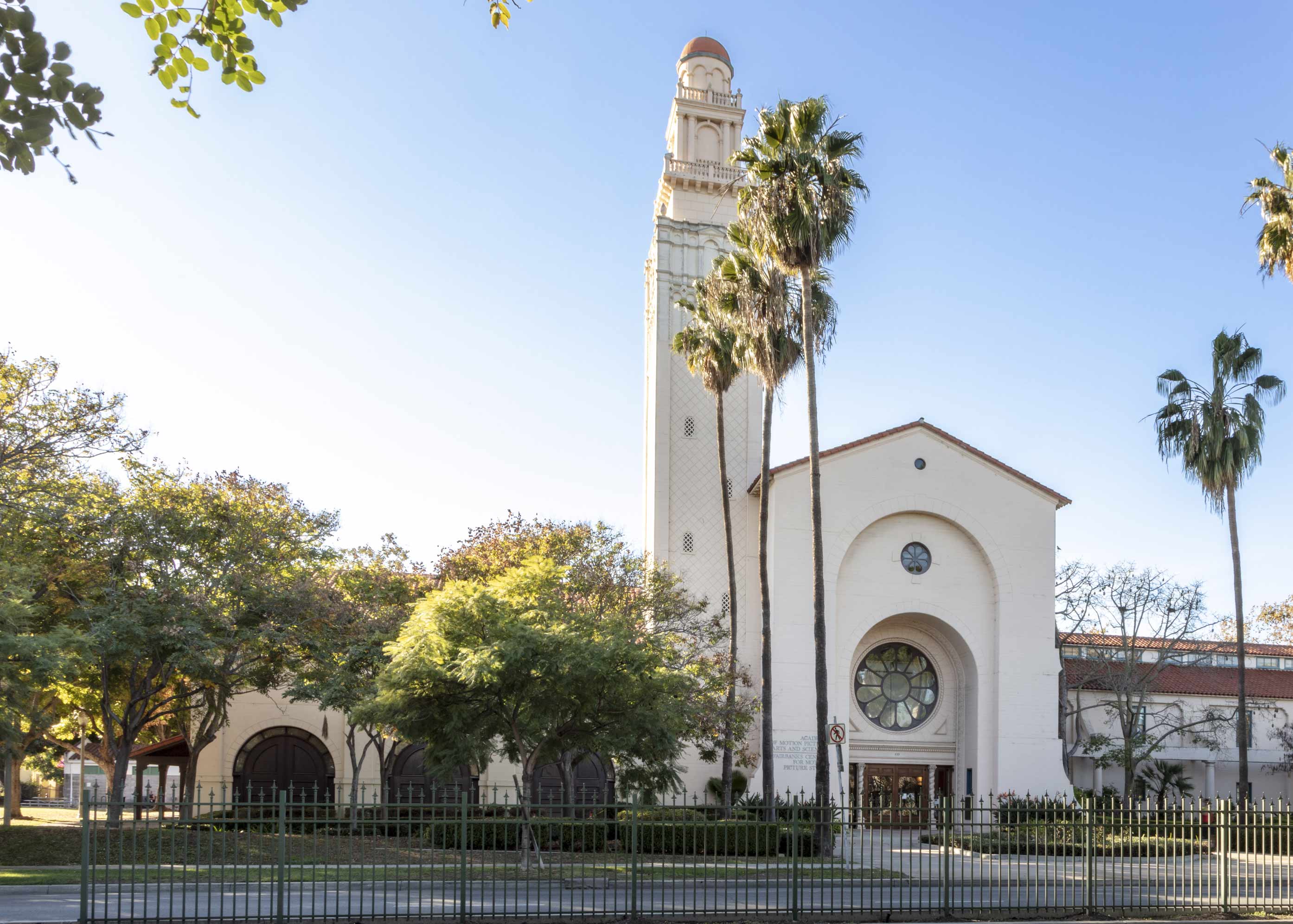The Academy Awards ceremony isn’t just a state-of-the-art, high-stakes television production or Hollywood’s biggest night. The annual event is also a collection of rigorously researched names, dates, credits, archival photographs, and other film data and materials. The staff of the Margaret Herrick Library does much of the assembling and fact-checking of these details. Originally established in 1928, just a year after the Academy was founded, the Academy Library was housed in various temporary locations before 1991, when it finally settled in its current home at the Fairbanks Center for Motion Picture Study in Beverly Hills.


Images: (left) Exterior, Waterworks building Treatment Plant No. 1. Core Collection. Subject files, Margaret Herrick Library, Academy of Motion Picture Arts and Sciences; (right) Margaret Herrick Library. Photo by Joshua White, JWPictures/©Academy Museum Foundation
The Academy Library's first incarnation, the organization’s first headquarters, and the first Academy Awards ceremony all shared a location: The Hollywood Roosevelt hotel. While 270 guests gathered in The Roosevelt's Blossom Ballroom to attend the first Academy Awards ceremony, the staff worked in a small suite of rooms off of the hotel’s event space. Though space was limited, the Academy’s foresighted founders did allocate some of the precious square footage to create an archive. From that modest beginning grew what is now a sprawling non-circulating reference and research collection devoted to the history and development of the motion picture as an art form and industry. Margaret Herrick was the Academy's librarian from 1936 to 1943 and served as the Academy’s executive director from 1945 to 1971. Herrick started as an unpaid volunteer yet laid the foundation for one of the world’s finest film-related libraries. Today, the library named after her holds over 32,000 books; 35,000 posters; 80,000 screenplays; 300,000 files of clippings; and 10 million photographs. While the Academy Museum houses all three-dimensional objects, the library is home to the Academy's treasure trove of two-dimensional materials—the aforementioned posters and photos, but also costume and production sketches, sheet music and musical scores, advertising materials, and more.






When Herrick retired in 1971, the Academy Library was renamed in her honor. This was in recognition not just for her work in the library, but also for the Academy overall. Herrick negotiated the Academy’s first television broadcast as executive director, and thereby freed the organization from its financial dependence on the Hollywood studios, which had initially bankrolled it and its signature ceremony. For many years before and after it was named after Herrick, the library led a somewhat fragmented existence even as it grew, with parts of its collection stored in many sites across Los Angeles. That changed in 1991 when the library moved into its permanent home at what had once been the Beverly Hills Waterworks Building. Built in 1928 to treat the area’s wastewater, the original building’s exterior was designed by architect Arthur Taylor to look like a “Romanesque-influenced church,” while inside, the structure contained a full treatment plant, its bell tower camouflaging a water purification system. Slated for demolition, the structure was saved by the Academy and a group of preservationists and was adapted to house the library and its collections. The settling tanks that once sifted wastewater were removed and replaced with expansive floors to hold the stacks and storage for several future generations of archivists, librarians, and researchers. More office space was also added, all for a relatively modest cost of $6 million, and the entire complex was rechristened the Fairbanks Center for Motion Picture Study in honor of the Academy’s first president, Douglas Fairbanks.